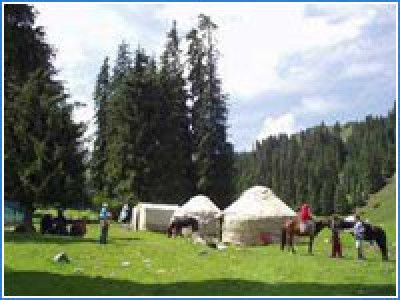
The history of Kyrgyzstan goes back to the depth of ancient times. Numerous archaeological findings such as household items and tools, caves and site of the Stone Age, petroglyphs and other traces of material culture made it possible to compose quite a comprehensive and complete picture of life that primitive people lived at the territory of today"s Kyrgyzstan.
The first traces of a man presence here refer to early Palaeolith-Ashel epoch (400-100 thousand years ago). There are archaeological findings and relics belonging to Moostjer epoch (100-40 thousand years ago), upper Palaeolith (40-12 thousand years ago), and Mesolith (10-6 thousand years B.C.) found in Kyrgyzstan. The Primitive men of Naeolith period (6-4 thousands B.C.) lived throughout the territory of Kyrgyzstan. The sites of these times were found at the Issyk-Kul Lake, in the Tien Shan mountains, in the Chu River valley, in the valleys of Talas, Alai, and Ketmentyobin as well as other places.
In the Bronze Age (2nd millennium - beginning of the 1st millennium B.C.) nomadic as well as sedentary populated the Kyrgyz lands with the later mostly concentrated in the valleys of the Southern Kyrgyzstan. The material evidences of this time are sepulchres, household items and items of jewellery found there.
Perhaps as early as at 7th to 3rd centuries B.C. the territory of Kyrgyzstan was inhabited by the nomadic tribes of Sakas: Saka Tigrakhauda and Saka Khaumavarga.
First written mentioning of such tribes and their settlements in connection with the land of contemporary Kyrguzstan is attributed to the middle of the 1st millennium B.C. - that is "Avesta", sacred book of Zoroastrism and writings by Greek historian Herodotus. In the Persian written sources the tribes were called as "Sakas" while in the Greek chronicles - "Asian Scythians".

 Centralasia Adventures
+998712544100
Centralasia Adventures
+998712544100










